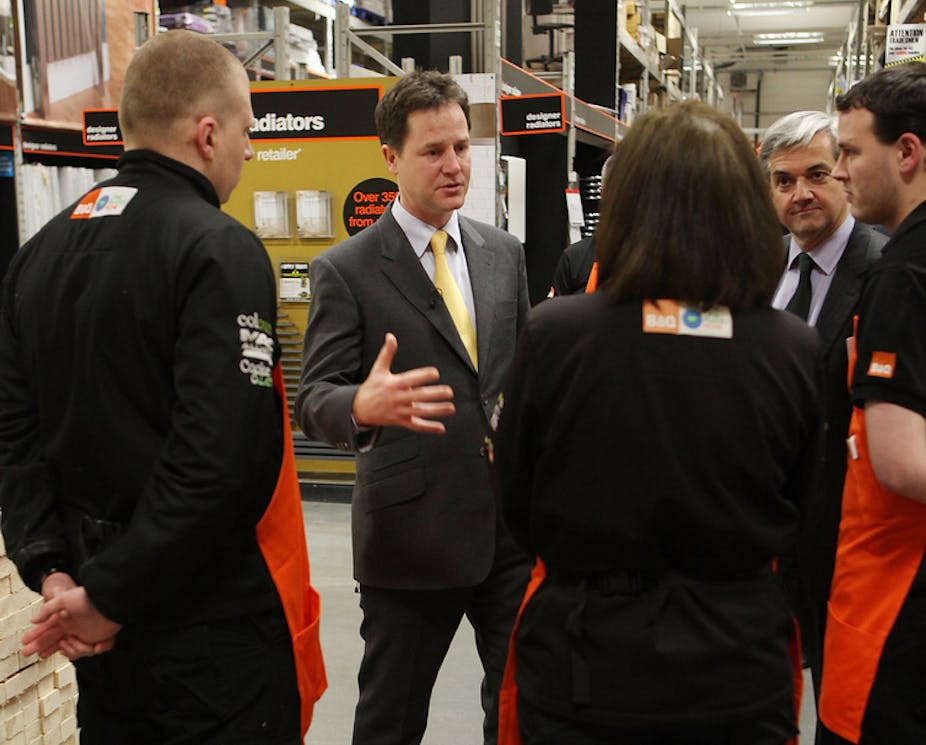The UK government has released a Green Deal that, at face value, seems impossible to replicate in Australia. But how radical and ambitious is this policy?
The first thing to note is that the Green Deal does not set a new carbon emissions target. The UK targets are still the ones set by the Climate Change Act 2008 – a reduction of carbon emissions of 34% by 2020, and 80% by 2050, based on 1990 levels.
These are ambitious targets, and whether they will be met or not is impossible to predict, not least because any policy that spans over several decades is always open to change by future governments.
On top of that, as is the case with all policies, the devil is in the detail, and much of the detail is still unknown.
The secondary legislation on the Green Deal is scheduled to be laid before Parliament in early 2012, with the first official Green Deals appearing in mid to late 2012.
Still, one might ask why the UK has gone for such impressive targets, and what is it about the political climate over there that allows them to be much more ambitious than Australia?
There are at least two major explanations. The first is the regional context. The UK is part of the EU, and even if there has always been a significant level of Euroscepticism in Britain, their very presence in the EU cannot but affect their domestic policies.
In this sense, the UK is simply committing to do their part to reach the EU target of a 30% reduction of carbon emissions by 2020.
Australia has no comparable regional context. On the contrary, the current mineral boom driven by exports to China acts as an incentive to continue business as usual, and makes ambitious cuts to carbon emissions harder to sell in Australia.
The other major factor that explains the difficulties the current Australian government has coming up with more ambitious targets is the politics of fear so expertly orchestrated by the Coalition under Tony Abbott.
The Greens’ support of the minority Labor government is a double-edged sword here. Their influence should act as an impulse to come up with more ambitious cuts to carbon emissions.
However, that same influence makes the politics of fear more effective, given that green politics are still seen by many Australians as radical and out-of-touch with average Australia. By contrast, the current political situation in the UK is almost ideal for this Green Deal.
The Conservatives, the most reticent of the major parties to set ambitious targets, are in coalition with the Liberal-Democrats. This coalition has seen the Lib-Dems’ position on key policy areas (welfare and electoral reform) overrun by the Conservatives, to the dismay and anger of many of their supporters.
This has left climate change as one of the few areas that can help the Liberal-Democrats justify their coalition with the Conservatives. Moreover, denying the Liberal-Democrats this ‘victory’ was even more difficult for the Conservatives, given David Cameron’s election promise to lead the “greenest government ever”.
This is not to say that, when it comes down to the detail, the Conservatives might not still water down the Green Deal. For its part, the Labor party can hardly oppose the targets, given their commitment to fighting climate change. If anything, they could accuse the Coalition of not going far enough – but that would attract accusations of economic irresponsibility.
So, is this Green Deal a big deal? Not quite. The deal is a government plan to introduce loans for home upgrades that aims to make energy efficiency affordable and accessible. In essence, customers borrow the money to pay for the upgrades and pay back the loan through their energy bill. The scheme is also expected to support thousands of jobs.
Except for the innovative financial scheme, the Green Deal is similar to the Home Insulation Program launched by the Rudd Labor government in 2009.
In this sense, the UK might be advised to look at what happened in Australia, where a similar policy was derailed by the urgency with which it was rushed out of the ministry and into house roofs.
In any case, if consumers embrace the deal and the reforms are executed competently, British houses will become more energy efficient, and the policy should have a positive impact on jobs. That is no small deal. But it is no big deal either.
The question is how to make structural changes to energy production. The structural changes needed to cut the carbon emissions of the big polluters is the big deal, and here Australia faces a much more significant challenge than that faced by the UK.

